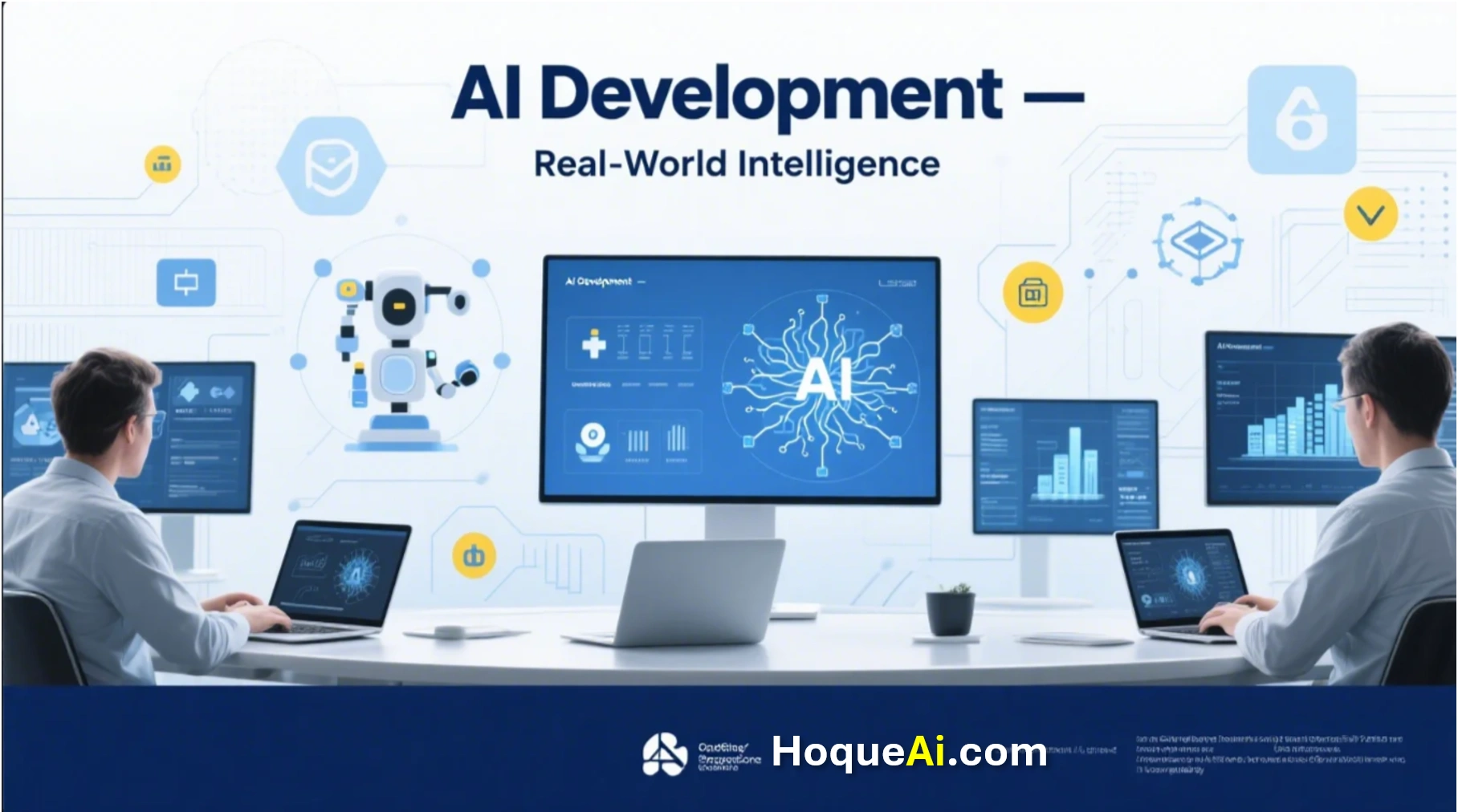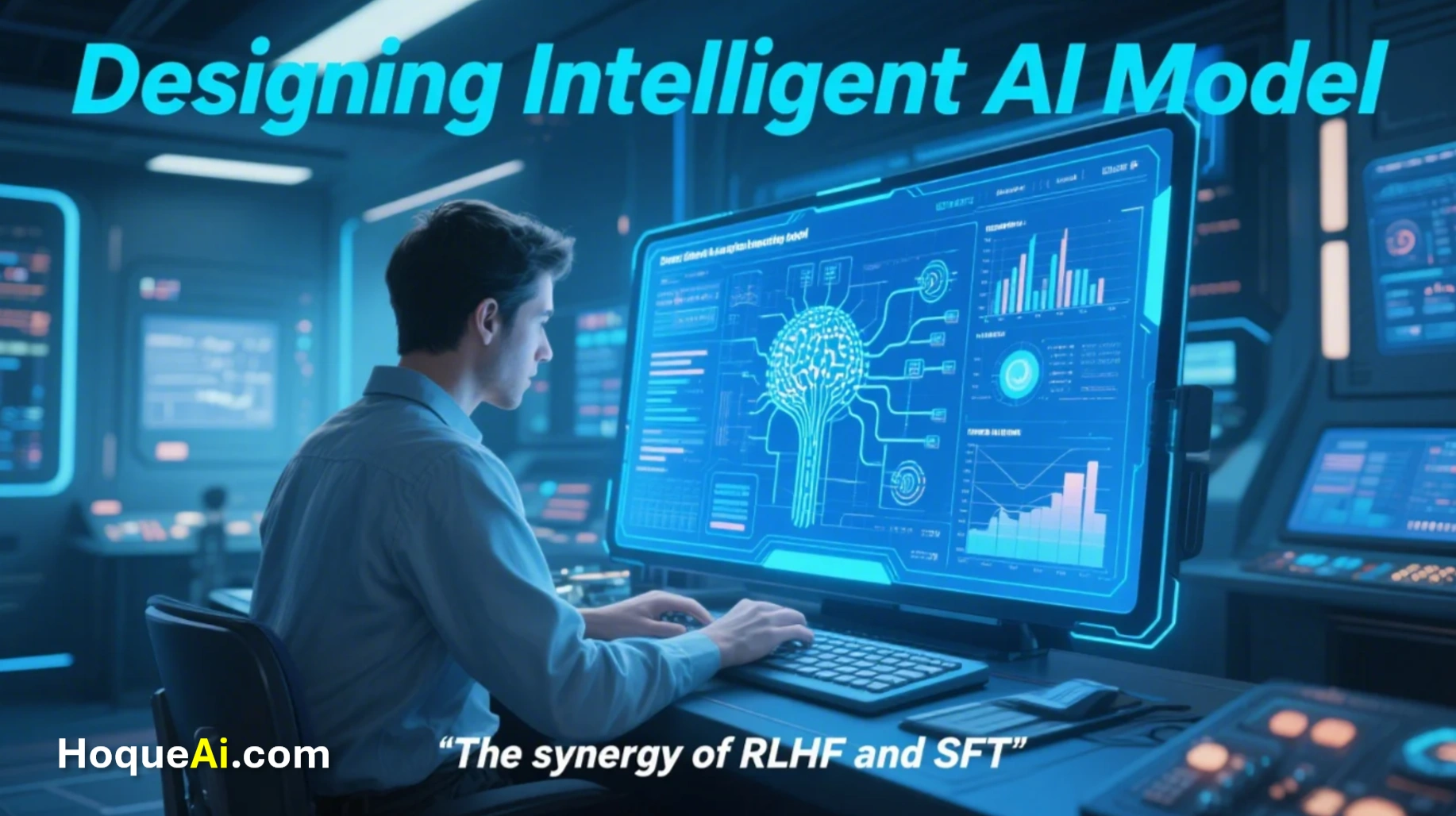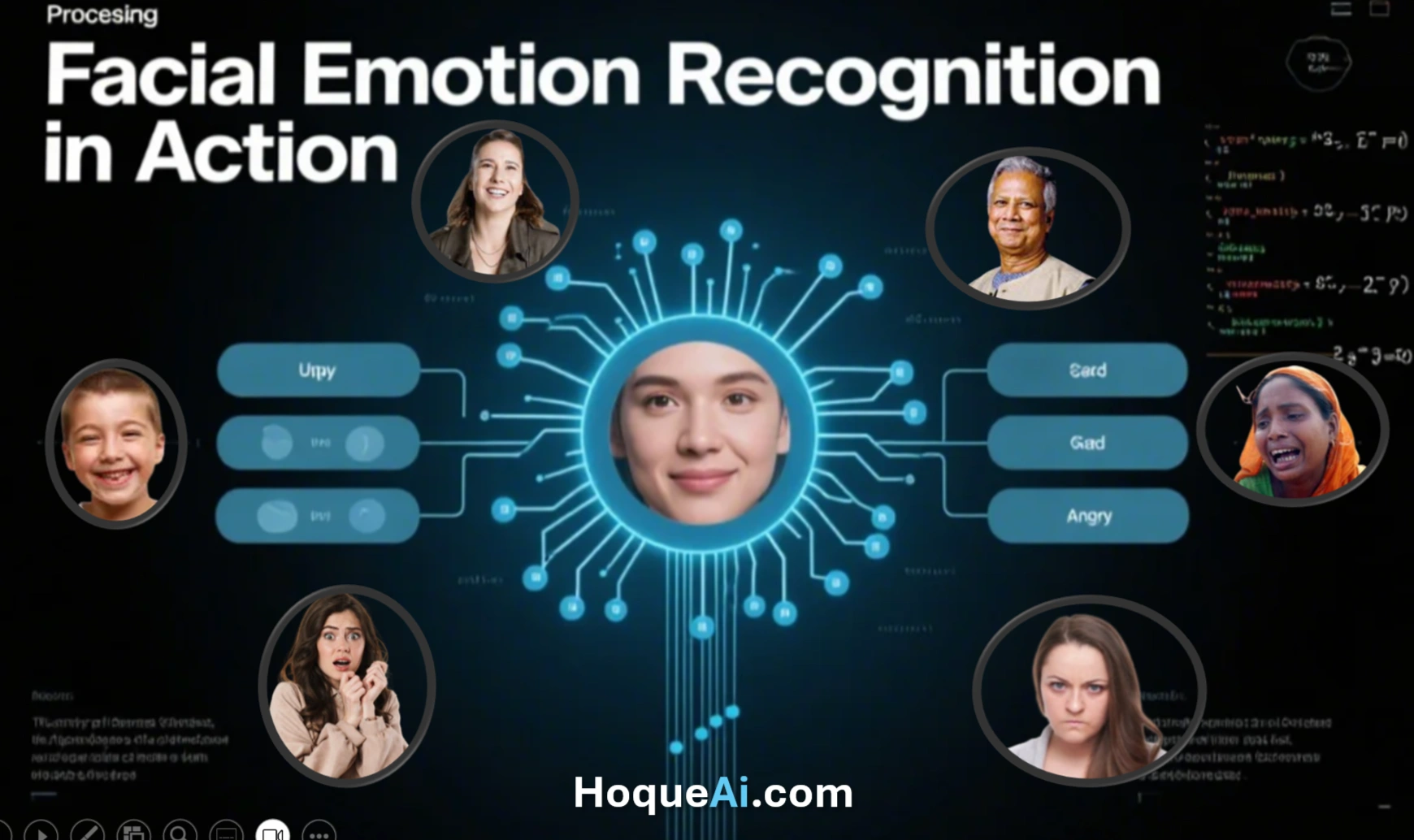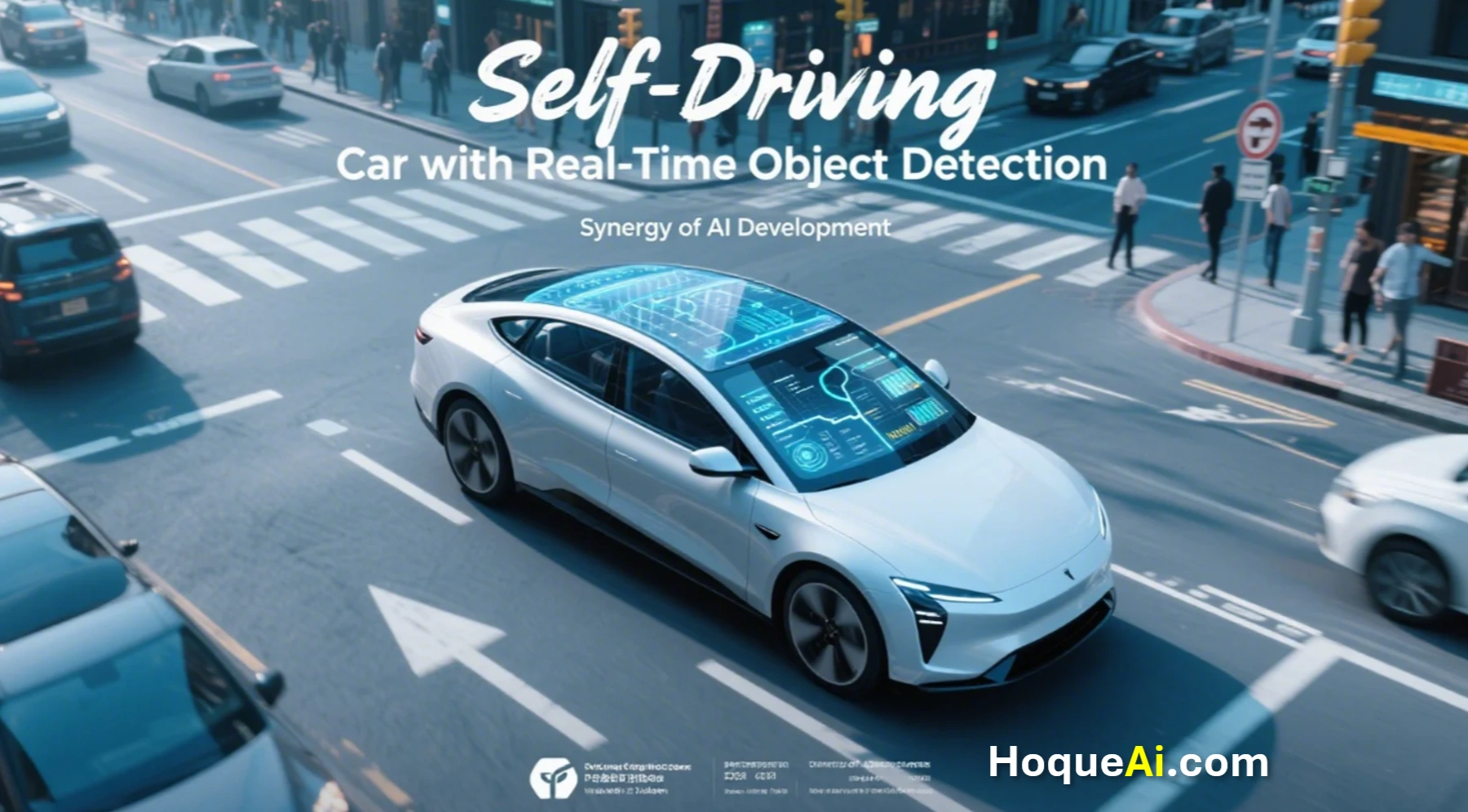


Fig. 1: AI Generated image: Web design for AI professionals. Modern Web Design Concept.
Artificial Intelligence is transforming industries by automating complex tasks, enhancing decision-making, and delivering personalized experiences. This page outlines my approach to developing AI solutions—from conceptualization and model design to training and deployment—in real-world environments.

Fig. 2: AI Generated image: Designing a deep learning model architecture on a futuristic
digital screen,
surrounded by data graphs and neural network visualizations.

Fig. 3: AI Generated image: A neural network analyzing faces
to detect emotions,
like 'happy', 'sad' and 'angry'.
Facial Emotion Recognition is a vital application of AI in the fields of mental health, security,
and customer experience. By leveraging deep learning and computer vision, we can build systems that
interpret human emotional states—such as happiness, anger, sadness, or surprise—based on facial
expressions captured through cameras.
These models are trained using annotated datasets containing diverse facial expressions across
demographics. Convolutional Neural Networks (CNNs) are typically employed to learn the intricate
features and subtle nuances of different emotions. Real-time recognition requires optimized models
for speed and accuracy.
Applications include personalized user experiences, security monitoring, driver fatigue detection,
and even helping individuals on the autism spectrum better understand social cues. Integration into
apps and smart devices allows these systems to run locally or in the cloud with scalable APIs.

Fig. 4: AI Generated image: AI-powered vehicle navigating city streets autonomously,
detecting lanes, signs, and pedestrians using visual overlays
Self-driving cars are one of the most advanced applications of Artificial Intelligence. These autonomous
systems rely on real-time object detection to recognize vehicles, pedestrians, traffic signs, and
obstacles on the road. The integration of AI ensures faster reaction times, reduced human error, and
improved safety.
I have designed models using convolutional neural networks (CNNs) and YOLO-based architectures to detect
and classify objects at high speed. These models are trained on driving datasets like KITTI and COCO,
and further optimized for embedded platforms used in autonomous vehicles.
Real-time detection is coupled with decision-making algorithms and path planning modules. Together,
these form the core of the driving intelligence system, enabling the car to make safe and context-aware
driving choices on highways and in urban environments.
My contributions include lane detection systems, obstacle tracking modules, and simulations using
NVIDIA’s self-driving datasets and Carla simulator for validating the models in dynamic conditions.

Fig. 5: AI Generated image: A multilingual chatbot on screen, responding
to text
queries using NLP, with animated language bubbles around it.
Conversational AI and Natural Language Processing (NLP) are transforming how machines interact with
human language. These technologies are used to build intelligent systems that can understand,
generate, and respond to text or speech in a human-like manner.
Key applications include sentiment analysis, topic classification, chatbots, virtual assistants, and
question-answering systems. By leveraging large-scale language models and transformer-based
architectures like BERT and GPT, NLP systems are able to comprehend context, manage ambiguity, and
provide meaningful responses across various domains.
Advanced text preprocessing techniques, tokenization, named entity recognition (NER), and attention
mechanisms are integrated to enhance language understanding. These models are trained using diverse
datasets and fine-tuned for specific tasks such as healthcare, finance, or education.
Real-time applications of conversational AI are widely adopted in customer support, content moderation,
voice-activated devices, and multilingual interfaces, improving accessibility and user engagement across
platforms.

Fig. 6: AI Generated image: A large data dashboard showing personalized movie and shopping
recommendations, with AI tags and user behavior analysis charts.
AI-powered personalized recommendation systems are critical tools that help businesses deliver
tailored experiences to individual users. By leveraging machine learning, these systems analyze
customer behavior—such as browsing activity, past purchases, search history, and engagement
metrics—to predict and suggest relevant products, services, or content.
For business stakeholders, these systems drive higher customer satisfaction, boost retention,
and significantly increase conversion rates. Whether in e-commerce, media, education, or
healthcare, personalized recommendations translate into measurable ROI by aligning offerings
with user preferences.
For developers, building these systems involves applying techniques like collaborative filtering
(matching users with similar preferences), content-based filtering (suggesting items with
similar features), and hybrid approaches that combine both. Developers also work with large-scale
data pipelines, real-time inference engines, and feedback loops to continuously refine model
accuracy.
Ultimately, AI recommendation systems empower businesses to stay competitive in a user-driven
economy by delivering intelligent, adaptive, and highly personalized digital experiences.
© 2025 HoqueAI. All rights reserved. | Privacy Policy